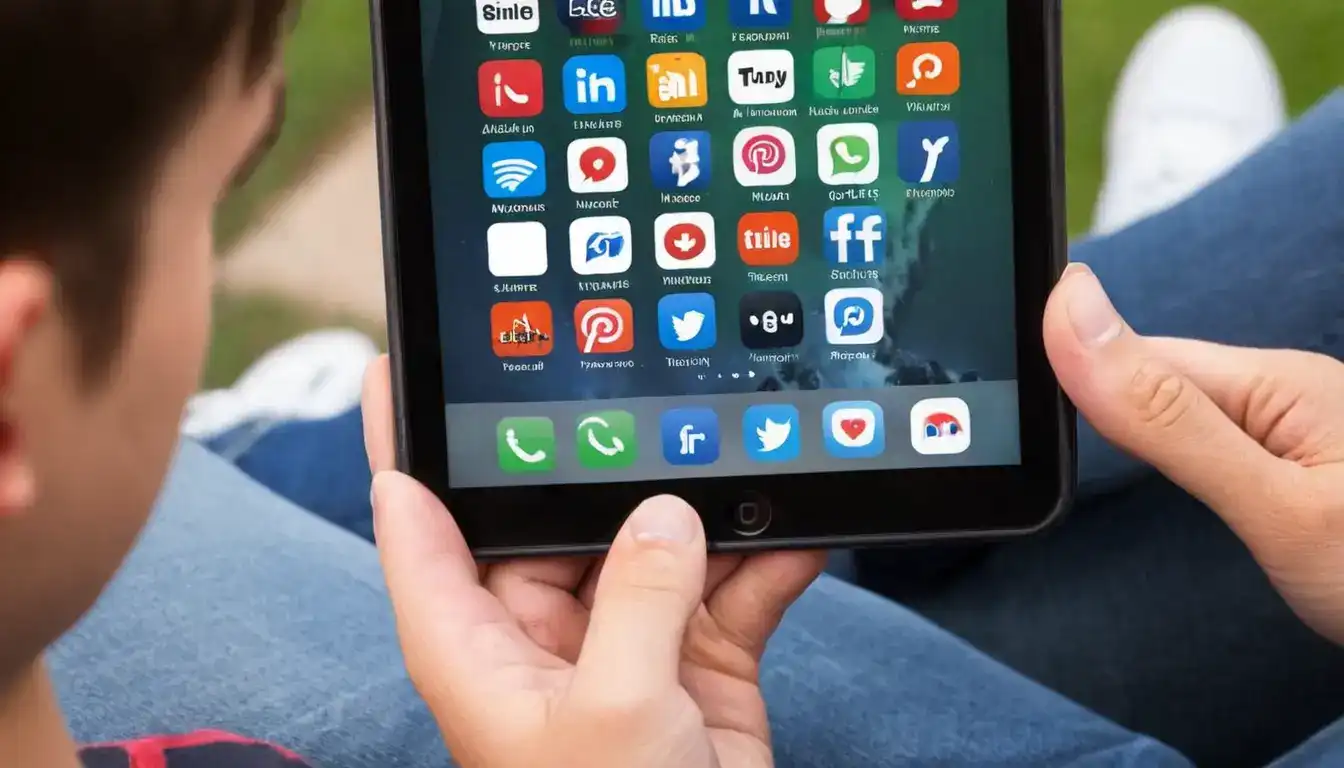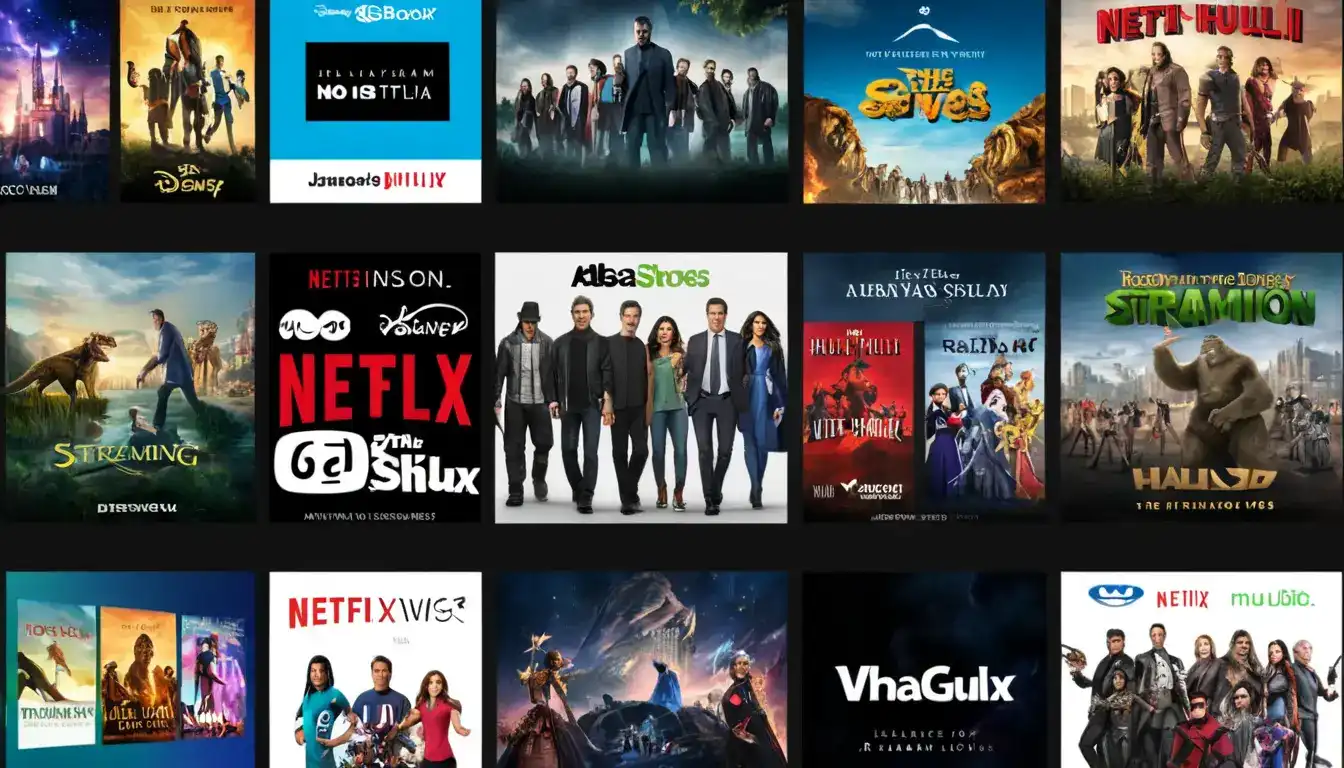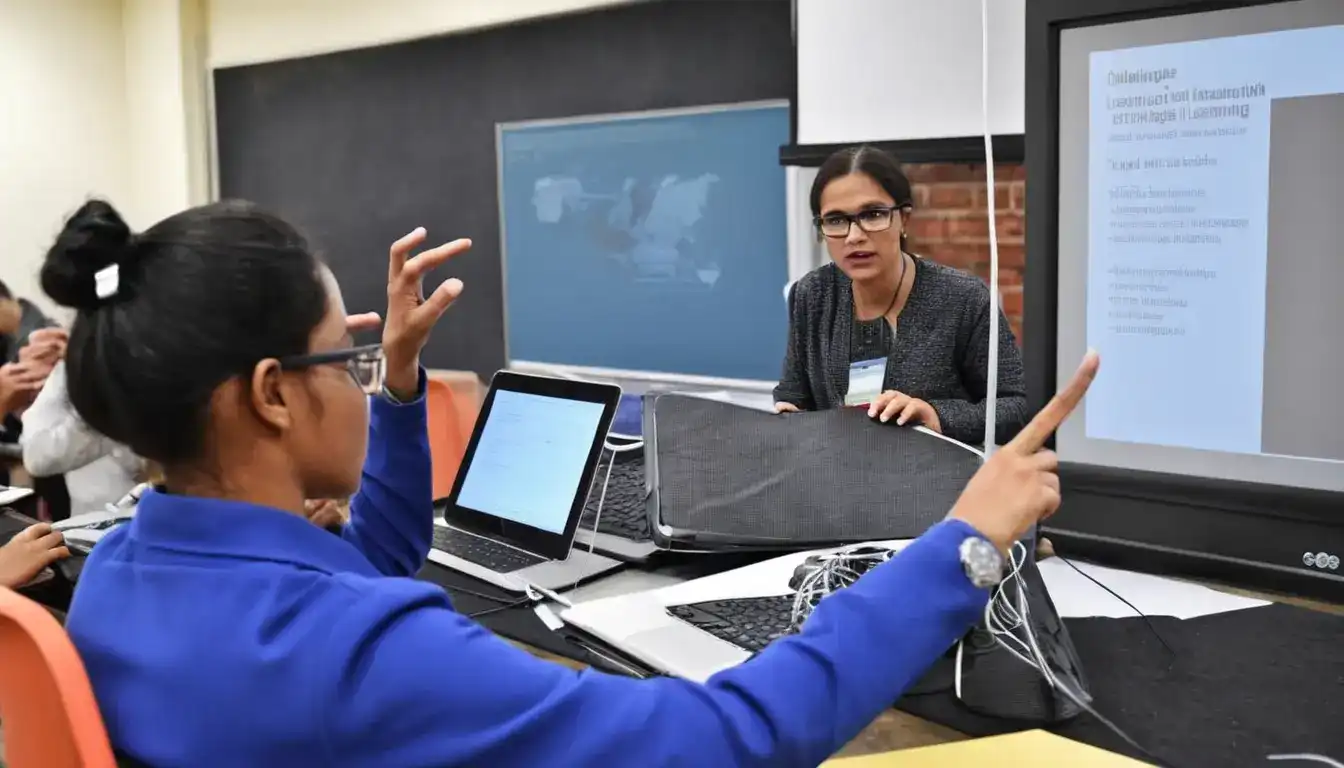How to Use Social Media to Increase Student Engagement
Emily Willis

Photo: How to Use Social Media to Increase Student Engagement
Imagine a classroom where history unfolds through interactive quizzes on Instagram Stories, complex scientific concepts are explained via captivating animations on TikTok, and students collaborate on projects with peers across the globe. This isn't a futuristic fantasy; it's the potential of social media harnessed to boost student engagement.
In today's digital world, social media platforms are no longer just for sharing selfies and funny cat videos. They can be powerful tools for educators to connect with students, create a vibrant learning community, and make education more interactive and fun. But how do you leverage the power of social media effectively in the classroom? Here's a guide to using these platforms to spark student interest and boost engagement:
Content is King (and Queen): Making it Relevant and Engaging
The key to successful social media engagement lies in creating content that resonates with students. Here are some tips:
- Know Your Audience: Tailor your content to the specific interests and social media habits of your students. Are they active on Instagram, Twitter, or TikTok? What kind of content catches their attention? Understanding your audience will help you choose the right platform and create content that speaks to them.
- Variety is the Spice of Learning: Don't just post dry textbook excerpts. Mix things up with infographics, short videos, polls, quizzes, and interactive elements. Leverage the unique features of each platform. For example, Instagram Stories are great for behind-the-scenes glimpses or quick Q&A sessions, while Twitter can be used for sharing educational news or hosting discussions with hashtags.
- Embrace Humor and Creativity: A little humor can go a long way in making learning more enjoyable. Use memes, create funny skits related to the curriculum, or encourage students to submit their own creative content related to the topic.
- Connect Learning to the Real World: Demonstrate the relevance of your lessons by showcasing real-world applications of the concepts you're teaching. Share news articles related to course topics, highlight inspiring stories of individuals who used these skills in their careers, or discuss current events through the lens of what you're learning in class.
Building a Community: Fostering Interaction and Collaboration
Social media is a two-way street. Don't just broadcast information; encourage student interaction and build a strong learning community. Here's how:
- Polls and Q&A Sessions: Use social media polls to gauge student understanding of a topic or spark discussions. Host live Q&A sessions on platforms like Instagram Live or Twitter Spaces to answer questions in real-time.
- Group Discussions and Projects: Create private social media groups for specific classes or projects. This allows students to collaborate, share ideas, and get feedback from peers and instructors.
- Student Takeovers: Let students take the reins occasionally. Give them the opportunity to curate content, host Q&A sessions, or create educational challenges for their classmates.
- Recognizing Achievements: Celebrate student success on social media. Highlight exceptional work, showcase student projects, or acknowledge participation in discussions. This creates a positive and motivating environment for everyone.
Safety First: Creating a Responsible and Positive Online Space
Social media can be a breeding ground for negativity or inappropriate behavior. Here's how to ensure your social media presence fosters a safe and positive learning environment:
- Establish Clear Guidelines: Set clear expectations for responsible online behavior. This might include guidelines on respectful communication, plagiarism, and privacy.
- Monitor Activity: Keep an eye on your social media platforms. Respond to comments and address any negativity or inappropriate behavior promptly.
- Promote Digital Citizenship: Integrate discussions about online safety and responsible social media use into your curriculum. Help students develop critical thinking skills to evaluate the information they encounter online.
- Focus on the Positive: Highlight the positive aspects of social media. Show students how they can use these platforms not just for entertainment but also for learning, collaboration, and positive social change.
Beyond the Likes: Measuring Success and Making Adjustments
Engagement goes beyond the number of likes and shares. Here's how to measure the success of your social media strategy and make adjustments:
- Track Your Analytics: Most social media platforms offer built-in analytics tools. Use these tools to track metrics like reach, engagement (likes, comments, shares), and website clicks. This data can help you understand what type of content resonates with students and which platforms are most effective.
- Gather Feedback: Solicit feedback from students directly. Ask them what kind of content they find most engaging on social media and what types of social media activities they'd like to see more of in your class.
- Adapt and Experiment: Don't be afraid to experiment and try new things. Social media is constantly evolving, so be open to adapting your strategy based on what works best for your students and your teaching style.
Social Media: A Powerful Tool for Enhanced Learning
When used effectively, social media can transform your classroom into a dynamic learning environment where students are actively engaged, connected, and empowered to take ownership of their learning. It's a tool that can bridge the gap between traditional education and the digital world, making learning more relevant, accessible, and fun. So, embrace the power of social media, connect with your students, and create a classroom where learning knows no bounds.
Additional Tips for Social Media Success:
- Promote Your Social Media Presence: Let students know about your social media accounts and encourage them to follow you. You can also include your social media handles on course syllabi, presentations, and classroom signage.
- Cross-Promote: Promote your social media channels on your school's website or social media pages. This can help reach a wider audience and attract students from other classes or grade levels.
- Collaborate with Colleagues: Team up with other teachers to create joint social media projects or campaigns. This can help you reach a broader audience and share ideas with other educators.
- Stay Up-to-Date: Keep up with the latest trends and features on social media platforms. This will help you create fresh and engaging content that resonates with your students.
- Have Fun!: Enjoy the process of using social media for education. Your enthusiasm will be contagious and will make learning more enjoyable for your students.
Remember, social media is a tool, not a replacement for traditional teaching methods. Use it to complement your existing curriculum and create a more engaging and interactive learning experience for your students. With careful planning, creativity, and a commitment to fostering a positive online environment.
Latest ✨
View Allvibrant cultures of Mexico, China, and India, highlighting their unique customs, traditions, and ways of life. It emphasizes the importance of immersing oneself in these cultures to connect with the soul of a place and create lasting memories.
Emily Willis
Virtual reality (VR) and augmented reality (AR) are transforming the entertainment industry by offering immersive experiences that blur the lines between the real and virtual worlds. VR completely transports users into computer-generated environments, while AR overlays digital elements onto the real world.
Emily Willis
The Pacific Ocean is home to remote and enchanting islands that offer untouched natural beauty, rich cultures, and unique experiences for adventurous travelers. Tips for exploring these hidden gems include researching your destination, packing light, respecting local culture, exploring responsibly, and staying safe.
Emily Willis
concept of "sports for social good," which uses the power of sports to address social issues and create positive change. It highlights the impact of sports on diversity, gender equality, youth development, community engagement, health, and peacebuilding.
Emily Willis
Business
View All
August 5, 2024
How to Create Engaging Content and Convert Visitors to Customerscreating engaging content to attract and retain customers in the digital age. It provides strategies for understanding the audience, setting content goals, creating high-quality content, using storytelling and emotional connection, and optimizing content for conversions. It also covers content formats and distribution, measuring and analyzing content performance, and building relationships with influencers and user-generated content.
Emily Willis

August 5, 2024
How to Improve Your Leadership Skillsleadership skills in achieving organizational success. It discusses various aspects of leadership, including understanding leadership, identifying leadership styles, developing effective communication skills, building trust and credibility, developing emotional intelligence, delegating tasks effectively, embracing continuous learning, fostering a positive work culture, making tough decisions, developing a growth mindset, and building a strong team.
Emily Willis

August 5, 2024
Master Your Business Financial Plan in 5 Stepssecrets to mastering your business financial plan with five simple steps. Learn how to analyze financial data, set measurable goals, and create a comprehensive strategy for success. Unlock profitability, make confident decisions, and ensure a bright future for your business
Emily Willis
Economy
View AllBest Secured Loans for Debt Consolidation with Low Interest Rates | Compare Top Lenders & Save Money on Monthly Payments
Read MoreThe digital economy is rapidly changing the job market, with trends such as remote work, the gig economy, automation, e-commerce, cybersecurity, digital skills, and changes in traditional industries having significant implications. These trends offer both opportunities and challenges, requiring individuals and organizations to adapt by embracing flexibility, investing in continuous learning, and staying abreast of technological advancements in order to thrive in this evolving landscape.
Read MoreIn today's rapidly changing economic landscape, innovation and resilience are more important than ever. Innovation drives progress and competitiveness by creating new ideas and solutions to meet market needs. Resilience helps businesses withstand shocks and bounce back from setbacks by planning strategically and diversifying resources.
Read MoreEntertainment
View All
August 4, 2024
The Latest Music Trends, Artists Influencing Pop Culture, and How Digital Platforms Facilitate the Distribution of Music GloballyThe music industry is constantly changing due to consumer preferences, technology, and the influence of artists. Digital platforms have revolutionized music creation, distribution, and consumption, leading to genre fusion, the rise of independent artists, and collaborative projects. Influential artists like Billie Eilish, BTS, and Taylor Swift have shaped pop culture globally. Streaming services, social media, and direct-to-fan engagement have transformed music distribution. Digital platforms also promote cultural diversity and inclusivity, expand markets and revenue, and drive technological advancements. The industry is also focusing on sustainability and ethical practices. To succeed in the future, stakeholders must embrace digital transformation and champion inclusivity.
Emily Willis

August 5, 2024
Video Games: Enduring Appeal, Immersive Worlds, and Diverse Genresenduring appeal of video games, highlighting their ability to transport players to fantastical realms, challenge their minds, and foster connections with others. It explores the magic of immersive worlds, the vast array of genres available, and the social power of gaming.
Emily Willis

August 5, 2024
Music Universal Language: Connecting and Inspiring Across CulturesMusic has the power to transcend language barriers and connect people on a deep emotional level. It serves as a bridge between cultures, fostering understanding and appreciation for diversity. The universality of rhythm and melody creates a sense of unity, while the diversity of musical styles allows for exploration and creativity.
Emily Willis
Health
View AllRegular exercise is essential for maintaining both physical and mental health. It helps with weight management, cardiovascular health, muscle strength, energy levels, and sleep quality. Exercise also reduces stress and anxiety, improves mood, cognitive function, and self-esteem, and lowers the risk of depression. Different types of exercises, such as aerobic, strength training, flexibility, balance, and mind-body exercises, contribute to overall health. To start and maintain an exercise routine, it is important to start slowly, set realistic goals, find enjoyable activities, stay consistent, and listen to your body.
Emily Willis
Regular physical activity is crucial for maintaining long-term health and well-being. It has numerous benefits, including improving cardiovascular health, aiding in weight management, enhancing mental health, strengthening bones, boosting immune function, and promoting longevity.
Emily Willis
Quality sleep is essential for overall health and well-being, impacting physical, cognitive and emotional functioning. Lack of quality sleep can lead to a variety of health issues, including weakened immune function, heart problems, weight gain and cognitive impairment.
Emily Willis
Trending 🔥
View All
1
3
4
5
6
7
8
9
10
Lifestyle
View AllTechnology
View All
August 5, 2024
Top Unity Software Development Trends to Watch in 2024
Explore the top Unity software development trends that will shape the gaming industry in 2024. From AI integration to VR/AR immersion, cross-platform reach, cloud collaboration, and mobile gaming, Unity is revolutionizing gaming experiences. Stay ahead in the dynamic world of game development with these insights.

August 5, 2024
Top 10 Steam Games of 2024
Discover the 10 best Steam games of 2024 and embark on an unforgettable adventure. From breathtaking open-world epics to thrilling FPS battles, these must-play games will keep you entertained for hours. Get ready to dive into the exciting world of Steam gaming and discover your next favorite game!

August 5, 2024
Application of IoT in Various Industries
The Internet of Things (IoT) has revolutionized various industries by enabling real-time data collection, analysis, and automation. In manufacturing, IoT has led to smart factories, predictive maintenance, and supply chain optimization. In healthcare, IoT has facilitated remote patient monitoring, smart hospitals, and enhanced patient care.

August 5, 2024
Oculus Quest 2 vs HTC Vive Pro – Which Should You Choose?
Oculus Quest 2 vs HTC Vive Pro – which VR headset reigns supreme? Dive into this ultimate showdown to discover the strengths and weaknesses of each, and decide which one is worth your investment. From specs and comfort to content and price, we'll help you make an informed choice.





















